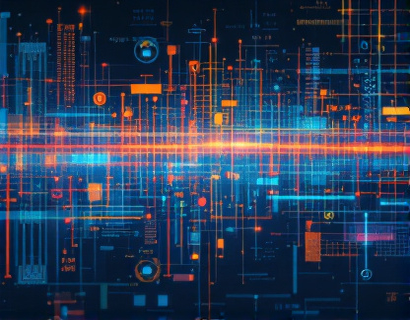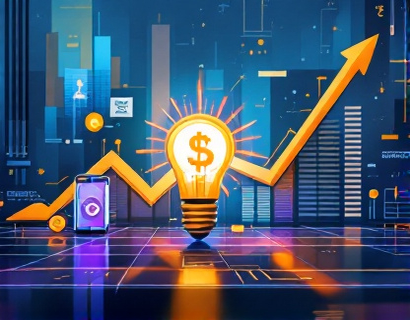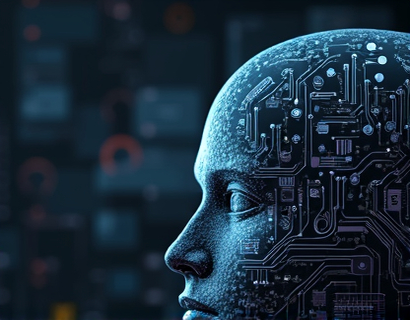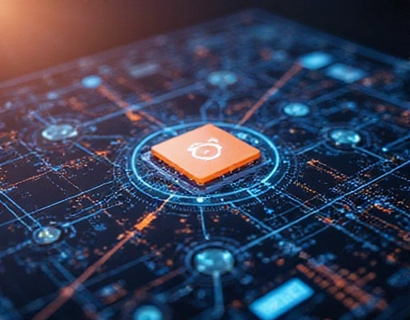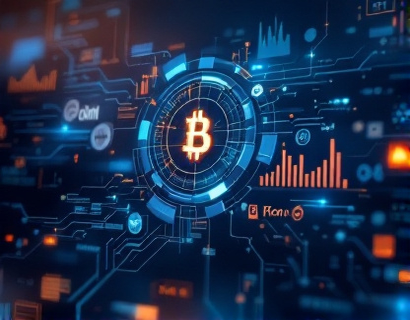Revolutionizing Digital Asset Management: The Power of Decentralized dApps for Cross-Blockchain Conversion
The landscape of blockchain technology is rapidly evolving, presenting both opportunities and challenges for professionals and enthusiasts alike. One of the most significant hurdles in the adoption and utility of blockchain solutions is the interoperability between different blockchains. Traditional methods of converting digital assets from one blockchain to another often involve complex processes, high transaction fees, and potential security risks. However, a groundbreaking decentralized application (dApp) is changing the game by streamlining cross-blockchain digital asset conversion, offering unparalleled compatibility and efficiency.
This decentralized application, often referred to as a dApp, is designed to facilitate seamless conversions of digital assets across multiple blockchains. By leveraging the power of decentralized networks, this platform ensures that users can manage and transfer their digital assets with ease, without the need for intermediaries or centralized authorities. For blockchain professionals and digital asset managers, this innovation represents a significant leap forward in the realm of digital asset management.
Understanding the Need for Cross-Blockchain Conversion
The diversity of blockchains, each with its own unique features and use cases, has led to a fragmented ecosystem where digital assets are often confined to specific platforms. This fragmentation poses several challenges. For instance, a user holding an asset on Blockchain A may need to use it on Blockchain B for a particular transaction or feature. Traditional methods of transferring these assets involve using bridges or relay chains, which can be slow, expensive, and vulnerable to security issues.
Moreover, the lack of standardization in blockchain protocols makes it difficult for users to manage their assets across different networks. This is where the need for a decentralized solution becomes apparent. A dApp that can handle cross-blockchain conversions not only simplifies the process but also enhances security and reduces costs. By removing the need for centralized intermediaries, users gain more control over their assets and transactions.
How the Decentralized dApp Works
The decentralized dApp operates on a network of nodes, each running the necessary smart contracts to facilitate asset conversion. Here’s a high-level overview of the process:
- Asset Locking: The user initiates the conversion process by locking the desired asset in a smart contract on the source blockchain. This ensures that the asset cannot be moved or altered until the conversion is complete.
- Validation and Conversion: The smart contract validates the asset and initiates the conversion process. This involves executing a series of smart contracts on the target blockchain to create an equivalent asset. The conversion logic is pre-defined and executed automatically, ensuring accuracy and efficiency.
- Asset Unlocking: Once the conversion is successful, the new asset is unlocked and transferred to the user’s wallet on the target blockchain. The entire process is transparent and can be monitored in real-time through the dApp’s interface.
The decentralized nature of this dApp means that no single entity has control over the conversion process. Instead, the network of nodes collaborates to ensure the smooth and secure transfer of assets. This distributed approach not only enhances security but also makes the system more resilient to failures and attacks.
Benefits of Using a Decentralized dApp for Cross-Blockchain Conversion
The advantages of using a decentralized dApp for cross-blockchain asset conversion are numerous and significant:
Enhanced Security
By eliminating centralized points of control, the dApp reduces the risk of security breaches and fraud. Each transaction is verified by multiple nodes in the network, making it extremely difficult for malicious actors to manipulate the process.
Reduced Costs
Traditional cross-blockchain transfers often involve high transaction fees, especially when using bridge services. The decentralized dApp minimizes these costs by removing intermediaries and automating the conversion process. Users pay only for the gas fees associated with smart contract executions, which are generally lower.
Increased Efficiency
The automation of the conversion process ensures that transactions are processed quickly and reliably. Users can expect near-instant conversions, compared to the often lengthy and uncertain processes involved with centralized bridges.
Greater Flexibility
With a decentralized dApp, users are not tied to specific blockchains or services. They can seamlessly move their assets between any blockchain that supports the necessary smart contracts, providing unparalleled flexibility in managing their digital assets.
Improved User Control
Users maintain full control over their assets throughout the conversion process. The decentralized nature of the dApp ensures that assets are locked and unlocked by the user’s own private keys, giving them complete autonomy and peace of mind.
Technical Foundations of the Decentralized dApp
The success of a decentralized dApp for cross-blockchain conversion relies on several key technical components:
Smart Contracts
Smart contracts are self-executing contracts with the terms of the agreement directly written into code. In this dApp, smart contracts are deployed on the source and target blockchains to handle asset locking, validation, conversion, and unlocking. These contracts are transparent, auditable, and execute precisely as programmed, ensuring reliability and trust.
Cross-Chain Communication Protocols
To facilitate communication between different blockchains, the dApp utilizes cross-chain communication protocols. These protocols enable the transfer of assets and data between blockchains, ensuring that the conversion process is seamless and secure. Examples include Polkadot’s XCMP and Cosmos’s Inter-Blockchain Communication (IBC) protocol.
Decentralized Network of Nodes
The dApp operates on a decentralized network of nodes, each responsible for executing specific parts of the conversion process. These nodes are incentivized to participate through token rewards, ensuring a robust and reliable network. The decentralized architecture also means that the dApp can scale horizontally, accommodating increasing demand without performance degradation.
Use Cases and Applications
The potential applications of a decentralized dApp for cross-blockchain conversion are vast and varied:
Decentralized Finance (DeFi)
In the DeFi space, users often need to move assets between different protocols and platforms. A decentralized dApp can streamline this process, enabling users to access a wider range of financial products and services without the hassle of multiple bridges and intermediaries.
Game Development
Game developers can leverage this dApp to create more fluid and engaging multi-blockchain gaming experiences. Players can carry their in-game assets across different games and platforms, enhancing the overall user experience and expanding the potential player base.
Supply Chain Management
Blockchain-based supply chain solutions can benefit from a decentralized dApp by enabling the seamless transfer of digital tokens or assets representing goods across different stages of the supply chain, regardless of the underlying blockchain.
Challenges and Future Developments
While the concept of a decentralized dApp for cross-blockchain conversion is promising, there are still challenges to overcome:
Scalability
Ensuring that the dApp can handle a high volume of transactions without performance issues is crucial. Continuous optimization and the adoption of layer 2 solutions can help address scalability concerns.
Interoperability Standards
Standardization of interoperability protocols across different blockchains is essential for widespread adoption. Industry collaboration and the development of universal standards can facilitate smoother cross-blockchain interactions.
User Adoption
Educating users about the benefits and functionality of decentralized dApps is vital for driving adoption. User-friendly interfaces and comprehensive documentation can help bridge the knowledge gap.
As the blockchain ecosystem continues to evolve, the role of decentralized dApps in facilitating cross-blockchain conversions will become increasingly important. By addressing the current challenges and leveraging the unique advantages of decentralized technology, these platforms can significantly enhance the efficiency, security, and user experience in digital asset management.



